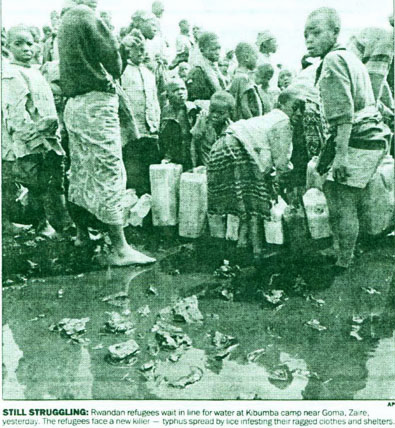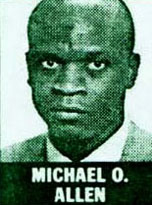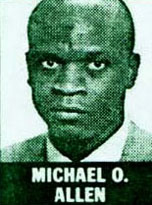 Sunday, May 13, 2001
Sunday, May 13, 2001
The United States government believes that Charles Arce of Brooklyn kept faith with his country. He went to Korea with the Army more than half a century ago and almost certainly died there.
Now, his country would like to keep faith with his memory and his family. But it isn’t easy to do so many years later.
One trail of Charles Arce’s family petered out at a Brooklyn Bridge entrance, where the family’s 41-43 Sands St. residence is now a parking lot.
Similarly, the 130 Fulton St. residence of Ramon Arce, an uncle listed with the Army as Charles’ beneficiary, no longer exists.
Visits to three other Brooklyn locations where his family lived before Arce enlisted with the Army to fight in Korea proved just as futile.
It has been more than 50 years since Pfc. Charles Arce, seven weeks short of his 20th birthday, went missing in action and was presumed killed in the brutal battle of Unsan in the early months of the Korean War.
As arduous and painstaking as the task of finding and recovering the remains of nearly 8,200 American servicemen missing in action from the Korean War has been, finding their living relatives is proving just as difficult, said Therese Fisher, director of genealogy at The American History Company.
The Army hired the company, which does genealogical research and publishes history books, to track down the relatives as part of the overall outreach of the U.S. Department of Defense to contact them.
Access to North Korea has improved in recent years and joint American and Korean teams have been recovering remains of servicemen in areas where American units fought during the war.
But finding relatives is another matter, said Maj. Horace Bowden, operations officer for the Repatriation and Family Affairs Division of the U.S. Army Casualty and Memorial Affairs Operation Center.
“After 50 years, the trail has gone pretty dark,” Bowden said.
The Army’s database has about 2,500 families. The identification process includes using mitochondrial DNA, meaning samples collected from the mother’s side of a serviceman’s family, to identify recovered remains.
Some of those remains may belong to Charles Arce, but the Army needs to make contact with his relations to verify that.
“Just because we’re looking for Charles Arce’s family doesn’t mean we have a set of bones, or remains that we believe to be his,” Bowden cautioned.
Army spokeswoman Shari Lawrence said the work of recovering remains and trying to connect them to family is extremely important.
“It’s a commitment we make to our soldiers that, if they’re injured or killed, that we will bring them home as quickly as possible,” Lawrence said. “It’s an obligation we have … whenever we know where they are and we can identify them as Americans, we will bring them home.”
Arce’s mother and father, Pedro and Dolores, came to Brooklyn from Puerto Rico in 1920. Born in Brooklyn on Dec. 21, 1930, Arce enlisted in the Army on Sept. 8, 1948. He soon found himself on the Korean peninsula as the Cold War turned hot when North Korea’s Stalinist government mounted an invasion of South Korea in June 1950.
The United States, heading the United Nations forces, jumped in to head off the aggression.
China, wary of U.S. forces so near its territory, sent human-wave attacks to aid the North Koreans. In fact, Chinese soldiers routed Arce’s 8th Calvary Regiment and the 1st Calvary Division on Nov. 1, 1950.
Arce was declared missing in action the next day. Very few American soldiers survived the battle over the next few days.
“It appears no one ever saw him killed,” Fisher said.
Arce was automatically promoted to the rank of corporal in 1953, but then was declared dead on Dec. 31 that year.
Complicating the search is a disastrous 1972 fire at the National Personnel Records Center in St. Louis, part of the National Archives, that destroyed about 80% of personnel files of anyone discharged from the Army between Nov. 1, 1912 and Jan. 1, 1960. The Army wasn’t even able to provide a photograph of Arce.
Fisher, whose company boasts a 100% success rate finding families of servicemen so far, said the missing records are crucial. She is left to trying to track down the family the old-fashioned way — using the telephone book. She has called most people named Arce in Brooklyn without luck.
Anyone with information about Arce or his family should call the Army at (800) 892-2490. For anyone with information about relatives of other MIA servicemen, the Navy’s number is (800) 443-9298; Air Force is (800) 531-5501 and the Marine Corps is (800) 847-1597. Families of American civilians missing in combat should contact the State Department at (202) 647-6769.
Original Story Date: 05/13/01
 by MICHAEL O. ALLEN, Daily News Staff Writer
by MICHAEL O. ALLEN, Daily News Staff Writer But now that a Tutsi rebel army has gained power in Rwanda, the Hutus of Burundi have seen the value of revolution. In the last month, 3,000 Burundians have died in political killiings, mainly Tutsis.
But now that a Tutsi rebel army has gained power in Rwanda, the Hutus of Burundi have seen the value of revolution. In the last month, 3,000 Burundians have died in political killiings, mainly Tutsis.

 by MICHAEL O. ALLEN
by MICHAEL O. ALLEN

